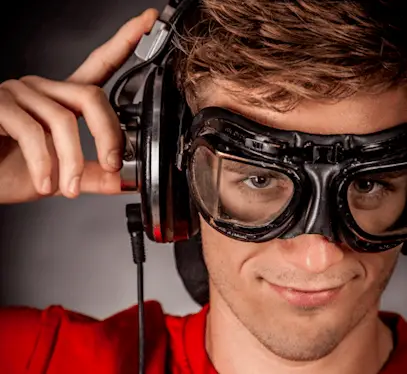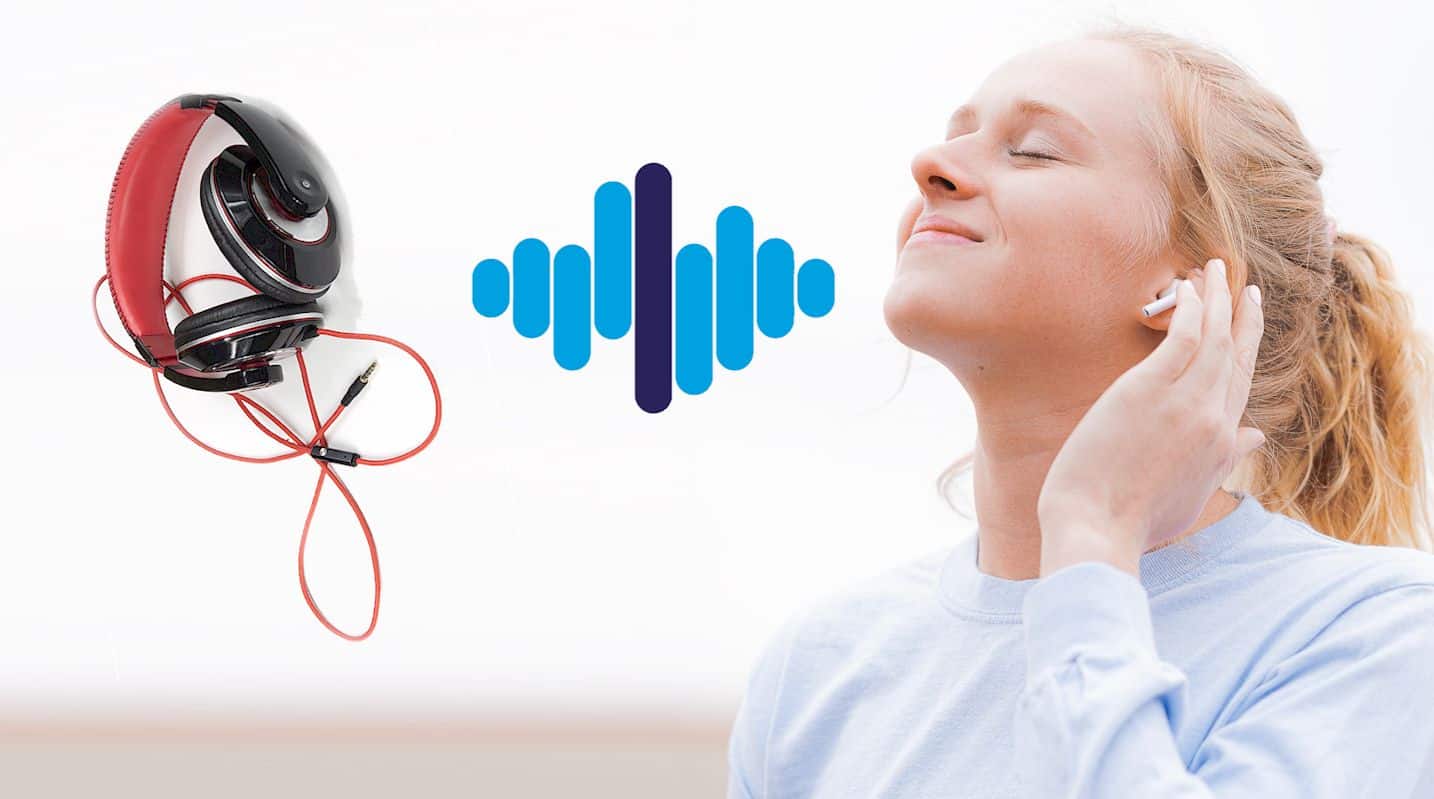Sometimes, you want to drown out the craziness of the outside world and pay attention to the seeming sanity within. Oftentimes, you rely on headphones or earbuds to help with this. I mean, what better way to help focus on one peaceful sound than by focusing on one sound only? And headphones seem to help silence the noise of the outside and help you find peace. However, while shopping for headphones, you must have been confronted with the feature “noise canceling” and “noise isolation.” Then, you get confused. You know what you want from a headphone; the ability to block out the noise of the outside world. But which feature can give what you want? Noise cancellation or noise isolation?
Don’t worry; we’ll help you understand the noise-canceling vs. noise isolating feature that comes with headphones. That way, you’ll be able to figure out which headphone you should go for when next you go headphone shopping.
Contents
Noise-canceling (active noise-canceling headphones, ANC)
Also referred to as "Active Noise Canceling" (ANC), noise canceling headphones reduce background noises. In doing so, it focuses your attention on the music blaring through the headset and into your ears.
It deploys a noise-canceling system for ambient noise canceling. Thanks to this system, every soundwave -baby tears, snoring neighbor, laughing teenagers- is neutralized. These background noises won’t interfere with the music, whatever it is you’re listening to. Hence, you get to be lost in a world of your own truth.
The best part is that, with a noise-canceling headset, you do not need to excessively increase the volume of your headphone to enjoy the music. The reason? ANC takes out the noise such that you won’t have to hear the ambient noise. With the best ANC headphone, you can sleep for as long as you want in a noisy airplane, bus, or train.
Related: About Bass Earbuds
How does it work
Although we’ve discussed ANC headphones meaning, let’s dive deeper into how it works. For starters, ANC deploys the antiphase technique in canceling out ambient or background noise. This technique is an active noise canceling technique. It deploys the use of a microphone that actively listens to the background noise that is generated in your surroundings.
Then, it takes the soundwave (the background noise) and creates an anti-noise soundwave that neutralizes or cancels the generated noise. In the process, it prevents background noise from penetrating your headphone to obstruct your music. It is referred to as active noise canceling because it promises to eliminate external noise. Hence, once your ANC headphone is on, you most likely won’t hear what’s going on around you anymore.
Where should you use it better?
Although ANC headphones promise to help with total ambient noise cancellation, it doesn’t eliminate background noises. The reason is that it doesn’t work for all kinds of sounds. For instance, sudden noise or sounds can still penetrate through the headphone to distract you from your music.
If someone quickly slams or suddenly bangs on a door, or someone suddenly claps their hands, it would interfere with your music. Also, the best ANC headphones only work to reduce background to the barest minimum. So, while it might not rudely intrude in your music, your ears might pick certain background noises if you focus on the environmental noise.
Hence, if someone starts talking to you, you might not be able to make out the words they say, but you would faintly hear that they are saying something. Then, it would be left to you to decide if you want to ignore them or pause your music, take out the headphone and listen to what they have to say.
In this light, it is best to use ANC headphones in environments with a certain level of quietness. If the environment is too noisy, chances are, the background noise might still pierce into your headphone. But not in a disturbing manner. You can better use ANC on a plane where the background noise isn’t too much. It is best used on a plane to block out the plane engine noise. ANC also works better on trains. It is also perfect for the gym, gaming, and studying. However, if you are looking to block out higher-frequency noises in the everyday commute to work like car honks, etc., you most likely won’t enjoy ANC headphones.
Related: why do singers wear earpieces
Is noise-canceling safe?
In short, Noise-canceling headphones are safe. They were initially invented to protect the hearing of pilots against the plane’s loud engine sounds. It was designed to eliminate low-frequency background sounds that are continuous. With this in mind, you do not need to increase the volume of music to enjoy the song's depths. Whatever song you listen to with a noise-canceling headphone would be clearer and pleasant to the ears.
The Pros of noise-canceling headphones
- It Protects your hearing:
When in a plane, the constant low-frequency engine noise can gradually become annoying, that it might start to mess with your hearing. It also generally reduces general external noises to the barest minimum without you needing to increase the volume of what you’re listening to. - It gives you a pleasant listening experience:
ANC helps you focus on your music and phone calls (when used for calls). It takes your attention off the external noises and draws you into the sound of whatever you use it for.
The Cons of noise-canceling headphones
- It consumes a lot of power:
Noise-canceling headphones consume a lot of power as they have short battery life. Hence, you’ll need to charge it to keep using it. - Comes with Higher Price Tags:
ANC headphones follow a more sophisticated design. Hence, the price of a great noise-canceling headphone is on the high side. - Not all ANC works the same:
The best ANC works perfectly to eliminate low-frequency and high-frequency noise to a reasonable level. However, terrible ANC reduces little or no noise at all.
Noise isolating (passive noise isolating headphones)
Noise isolation headphones are designed to kick out every background noise, generally between 25 to 30dB. It works by isolating your music so that you’ll enjoy it without any external distraction. Of course, you would probably still hear external noises. However, ambient noises would be faint with noise isolating headset.
Related: headphones crackling
But it depends on the level of noise. For instance, you would faintly hear ambient noises that are about 80dB with a sound-isolating headset. However, if you are listening to music, you most likely still won’t hear the ambient noise of about 80dB. When it comes to ambient sounds of about 20dB, you won’t hear anything at all as the headset would block it out to a satisfying degree. Generally, noise isolating headphones work to reduce mid-to-high frequency noise.
Related: blue yeti background noise
How does it work
Unlike ANC headphones, noise isolating headsets (also called passive noise canceling) deploys the use of the physical features of the headphone to reduce noise. It creates a seal around your ears, usually with the foam pads in the ear cups. Hence, the level of noise that is blocked out would depend on how well the earpads fit on or in your ear. If it is tight and is your proper fit, it would be more effective in eliminating noise.
Where should you use it better?
Sound isolating earbuds are best used in environments with mid-to-high frequency ambient noise. For instance, when you’re commuting to work, in a marketplace, or more noisy environments, noise isolation earbuds are perfect for you. You’ll get better noise isolation result if you invest in in-ear noise-isolating headphones. Nevertheless, over-the-ear sound isolating headset will still eliminate noise as long as they are your perfect fit.
Is noise isolation safe?
Yes, Noise isolation headphones are safe. Just like ANC headphones, you do not need to increase the volume of the song you’re enjoying to get rid of the ambient noises. With in-ear monitors, you will successfully block out mid-to-high frequency sounds without necessarily increasing the music you’re listening to.
Related: Planar Magnetic Headphones
The Pros of noise-isolating headphones
- It doesn’t require power:
Unlike noise-canceling headphones, noise isolation headphones do not need to be charged. - Perfect for Mid-to-high frequency noise:
Noise isolating headset is designed for noisy environments like the market. While it might not entirely shut you out of the world, it drastically reduces the crazy ambient noises. - Better sound quality:
It blocks out ambient noise using the physical component of the headphone. In essence, it delivers the sound in its truest form.
The Cons of noise-isolating headphones
- Can be uncomfortable:
If it doesn’t fit properly, wearing passive canceling headphones can be uncomfortable. Hence, you have to ensure that you get your perfect size.
Noise-canceling vs. noise isolating
Noise reduction frequency:
Both noises canceling and noise isolating headphones reduce noise to the barest minimum. However, each headphone works better with specific noise frequency types. While noise-canceling headphones work best for low-frequency sounds, noise isolating headphones are designed for mid-high frequency noise reduction.
Sound Quality:
Noise-canceling headphones often tend to sound worse when compared to Noise-isolating headphones. Their different approach to noise reduction causes the difference in sound quality. Because noise-canceling headphones create anti soundwave to reduce noise, the overall sound quality isn’t perfect. However, Noise-isolating headphones only rely on their physical construct for noise reduction. As a result, it renders music in its genuine sound quality.
Comfort:
You will most likely derive comfort from wearing noise-isolating headphones compared to Noise-canceling headphones. Here’s why! Noise-isolating headphones are designed to be custom fit. In essence, when you wear Noise-isolating headphones, they fit your ears perfectly. However, noise-canceling headphones are not designed to be custom fit. Hence, you could start to feel fatigued after wearing it for a long time.
Power Consumption:
Noise-canceling earbuds and headphones consume a lot more power compared to noise isolation headphones. Although some Bluetooth noise isolation headphone requires electricity, they do not consume as much power as noise-canceling headphones. The reason is, noise-canceling headphones require power to create the soundwave that reduces the ambient noise in the surrounding.
Size and Portability:
No doubt, noise isolating headphones are more portable and smaller than noise-canceling headphones. Noise-canceling headphones often come with an onboard microphone that helps with noise reduction. Nevertheless, the portability feature is still subject to earbuds models and brands.
Last Words
By now, you should be able to shop for headphones with confidence and more clarity. Since you now understand the noise-canceling vs. noise isolating difference, you can make a better-informed decision. It is noteworthy that while these two types of headphones are relatively safe for hearing, you want to be cautious about how you make use of them.
For instance, they already help with noise reduction without needing to increase the volume of the song you are listening to. Also, you need to understand the perfect environment for these headphones to get the best out of them.

HI, John Andrew here. I’ve been an audiophile since I was a little kid. I’m an original member of myaudiolover . It emerged as a way for me to share my passion and knowledge for audio technology. If you’re looking for tips, techniques, and insights about audio-tech, that can enable your productions that professional edge, then MyAudioLover is the place for you!

